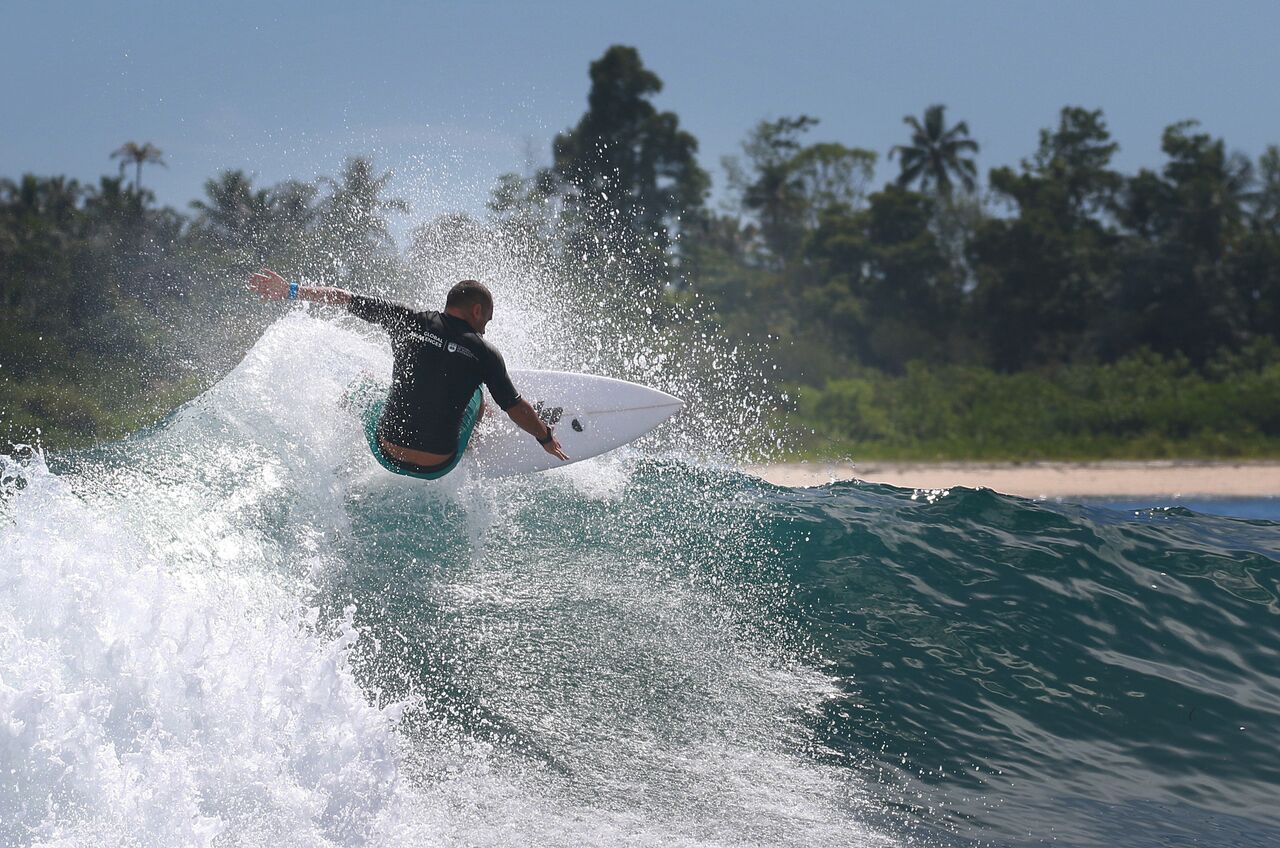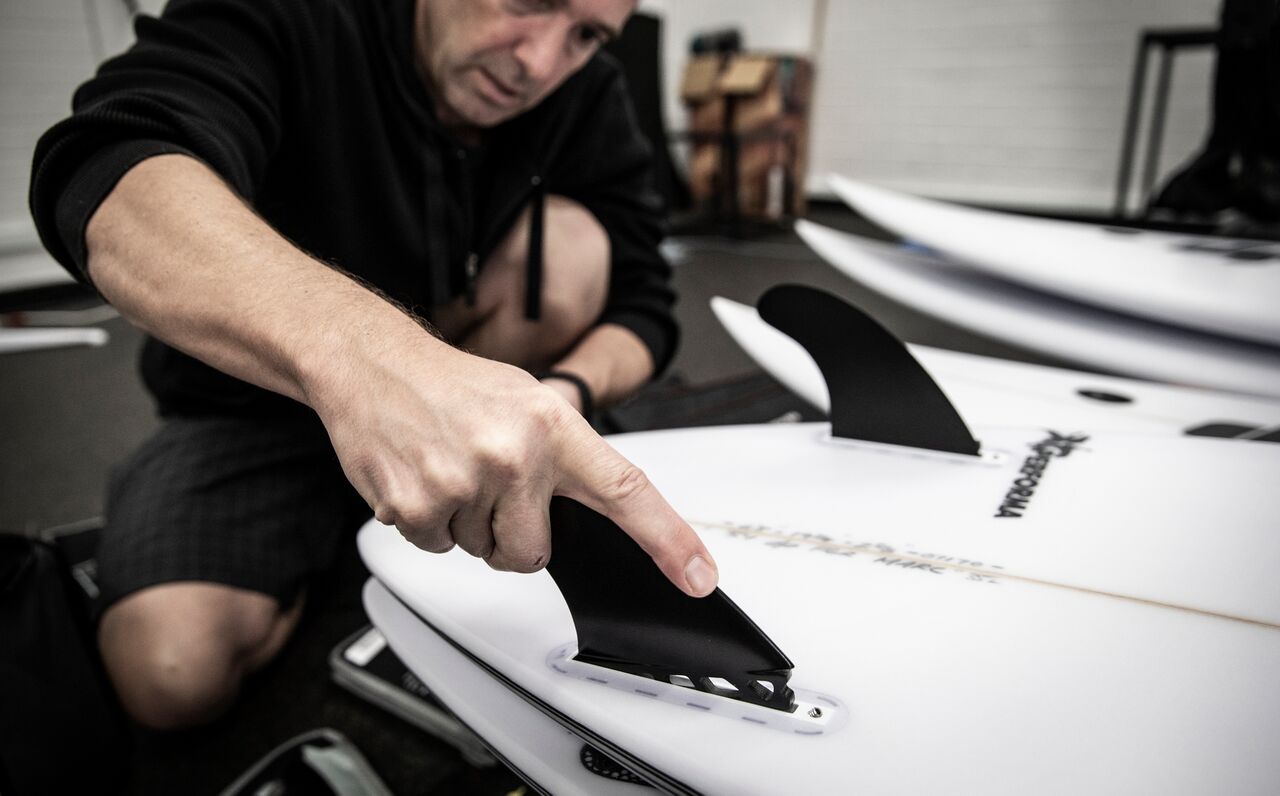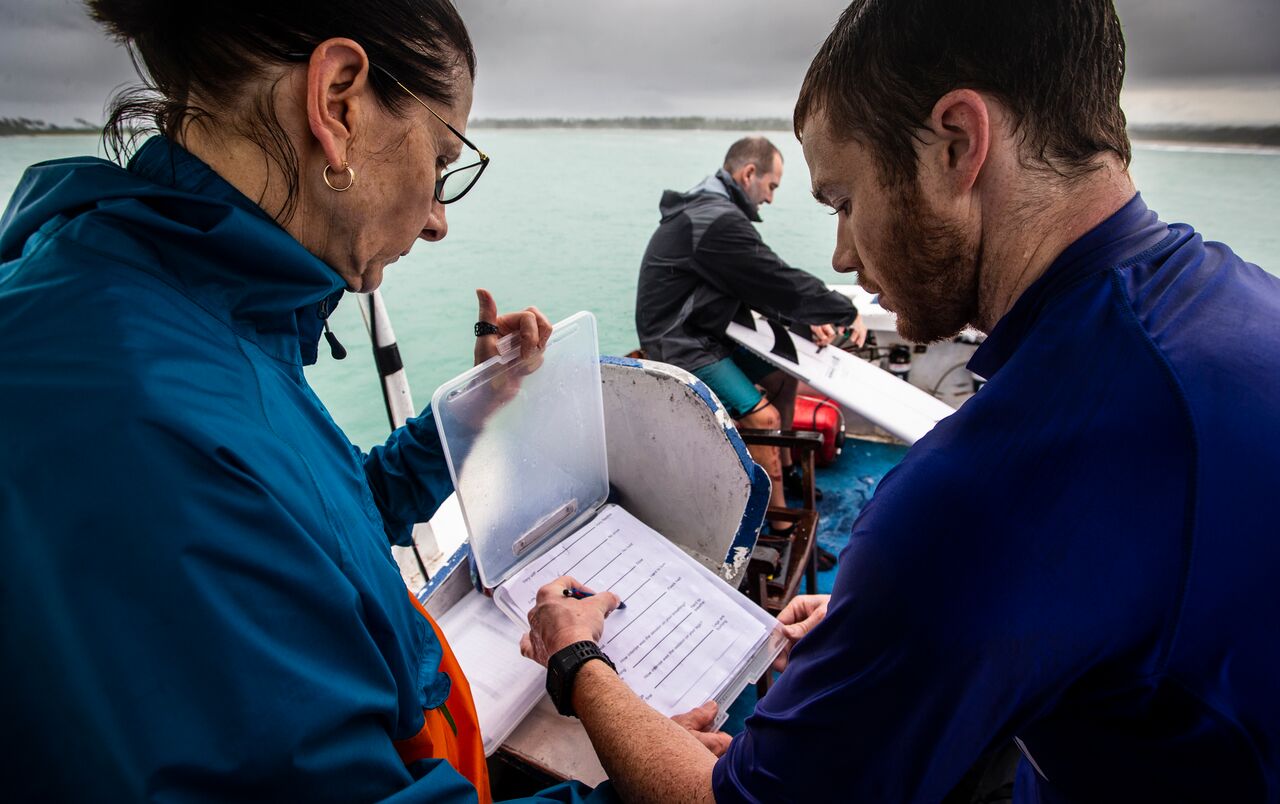Wanting to create the perfect wave-riding experience for surfers, two years ago, Marc in het Panhuis, Professor at the University of Wollongong’s (UOW) School of Chemistry, and a research team used additive manufacturing to produce customizable fins for surfboards.
Now, with a range of functional 3D printed fin prototypes, UOW students, surfers, and academics from the university’s Australian National Fabrication Facility (ANFF) visited the remote Mentawai Islands in Indonesia to test their creations.
“3D printing enables us to print virtually anything we can imagine and that includes surfboard fins,” said Dr. Stephen Beirne of the ANFF.

The future of surfing
In 2014, Professor Panhuis and his team began developing bespoke surfboard fins with the ultimate goal of giving Australia’s surfing industry a competitive edge within new surfboard designs.
Professor Panhuis explains in order to effectively ride waves, a surfer must depend on fitted fins mounted on the tail of their surfboards to steer through ocean swell – wave formations caused by wind, and air movements.
“There is a lot to a simple surfboard fin, you have to consider the fin base, depth, rake (or sweep), foil, cant, toe, and flex. Not to forget, the number of fins and their positioning on a surfboard.”
The research team, part of UOW’s Global Challenges Program, began the design process by generating CAD fin designs along with computational fluid dynamics to predict the fin’s performance in the water. Following this, they selected the appropriate composite materials, including carbon fibre reinforced plastics, to print the prototype.
Professor Panhuis added, “there is no such thing as a simple surfboard fin. The team has looked at things different materials that can make the fin stronger, lighter and its ability to flex.”

Testing the waters
After a lengthy design and prototyping process, the UOW researchers decided to test three 3D printed prototype fins, in the most consistent ocean conditions, to ensure fair and equal results for each prototype. Thus, they chose to visit the island chain off the western coast of Sumatra, as it provides dependable waves and a variety of surf breaks.
The UOW researchers instructed a team of six skilled surfers to execute a number of turns on a variety of waves on the surfboard fins. Dylan Perese, a local surfboard shaper of DP Surfboards also produced commercial surfboards for the trip which were compared to the surfboards with 3D printed fins.
In order to gather data on fin and surfing performance, Professor Panhuis used a selection of wearable GPS tracking devices and embedded sensors within the surfboard. Professor Panhuis said:
“The devices tracked everything from wave count, speed, number of turns to the amount of rail engaged during turning. The surfers also filled out a fin performance rating scale immediately after they completed riding each set of fins. The information is then used to compare the different sets of fins.”
In addition, to eliminate any bias towards particular fin designs, the surfers were made unaware of the type of fin they were using during the trial surfs.

The Crinkle cut fin
After surfing over 450 waves, and performing approximately 1700 turns in a variety of weather conditions over six days, the feedback from the surf team revealed the crinkle cut 3D printed fin as the favorite.
“Preliminary analysis of the fin performance rating data has revealed that the surfers, on average, have rated one of the 3D printed fins as feeling the best to surf on,” said Professor Julie Steele, the Director of UOW’s Biomechanics Research Laboratory.
“We were surprised that there was such a strong preference for this one fin, given the six surfers all had very different surfing styles.”
The Crinkle cut fin, named after a potato chip due to its design, has a series of grooves on one side to increase water flow to propel the surfer along a wave. Professor Panhuis stated:
“The reason this fin shape works so well is because the contours improve the way the water flows past it. These contours ultimately give the surfer more speed. The fins also seemed to offer plenty of drive and projection out of turns.”
The UOW team is now working on publishing the results of the surf trials.

Advancing extreme sports
3D printing has been used within extreme sports to advance the overall performance of its athletes.
Previously, CAPiTA, Washington based snowboard manufacturers, teamed up with plastics company CIME Industries to create the FUS3D 3D printed sidewall technology for snowboards.
The FUS3D process connects a single thermoplastic sidewall to the wooden core of the board which protects the flat the snowboard whilst absorbing shocks and streamlining its shape.
Keep up with the latest 3D news by subscribing to the 3D Printing Industry newsletter. Also, follow us on Twitter, and like us on Facebook.
Looking for a change of pace? Seeking new talent for your business? Search and post 3D Printing Jobs for opportunities and new talent across engineering, marketing, sales and more.
Featured image shows UOW surfer testing the 3D printed fins fitted on a surfboard. Photo via UOW.


